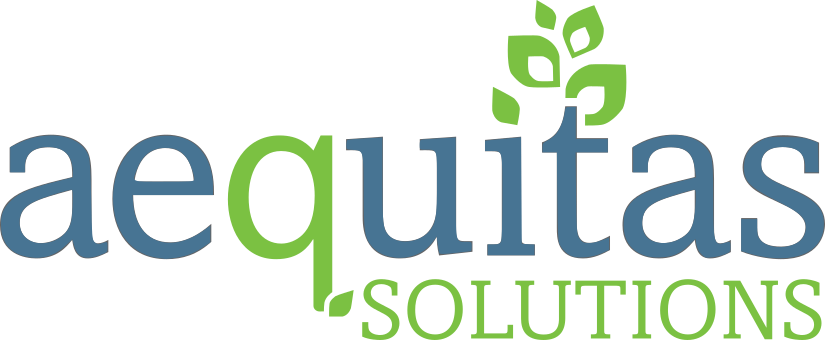Schools face increasing pressure to support students’ academic achievement and ensure their social and emotional well-being. As classrooms become more diverse in their learning needs, educators are expected to deliver a wide range of student support services. To meet these demands, educators need systematic, evidence-based approaches that can flex and adapt to meet the needs of each student.
A Multi-Tiered System of Supports (MTSS) framework offers a structured approach to creating and implementing intervention plans that work. By using data-driven inputs to identify student success factors and deliver targeted support strategies, schools can help students develop positive behaviors and succeed academically and socially.
Understanding the MTSS Framework
MTSS breaks student support into three levels, like a pyramid. At the bottom, you have Tier 1 – the foundational instruction and academic assistance every student receives from their teacher. This tier includes strategies like clear classroom rules and regular positive feedback. Students who need additional support progress to Tier 2, which provides targeted interventions in specific areas, like math problem-solving or reading fluency. At the top of the pyramid, there’s Tier 3, which includes more intense individualized support for students facing significant challenges, like chronic absenteeism or severe behavioral difficulties.
Academic and behavioral support fit naturally into the MTSS framework because MTSS allows schools to address challenges early and adjust support as needed. The key is using data effectively. Educators can identify students who could benefit from additional support through tracking behavioral, academic, and attendance data across all tiers.
Creating Effective MTSS Plans
Effective intervention plans should include student supports that address academic and behavioral needs. While each student is different, successful plans in all tiers share the common elements detailed below.
Collaboration
The best interventions come from collaboration. Teachers, specialists, parents, and students bring different perspectives that can improve the success of an intervention plan. When key stakeholders all buy into and contribute to the plan, whether it focuses on academic growth, behavioral development, or both, the student is more likely to have a positive outcome.
Clear Goals
Successful plans need clear and measurable goals. Avoid vague objectives like “improve in math” or “behave better in class.” Instead, set specific goals like “complete 85% of math homework with 80% accuracy” or “raise hand before speaking in 4 out of 5 class discussions.”
Progress Monitoring
You can’t improve what you can’t measure. Regular progress monitoring helps ensure interventions are working and students stay on track. Think of it as your GPS recalculating when you take a wrong turn; progress monitoring helps you know when to stay the course and when to change tactics to keep the student moving in the right direction.
Tailored Interventions
Matching the proper support to each student’s needs is key. Whether it’s extra reading support or a specialized behavior plan, interventions should be flexible enough to adjust based on student response while remaining consistent to show actual results.
MTSS Intervention Strategies by Tier
The MTSS framework offers support at different levels based on each student’s needs. Each tier builds on the previous one and includes specific strategies to help students succeed. Here are some strategies educators can use at each level of the MTSS framework.
Tier 1 MTSS: Universal Support Strategies
Consistent Classroom Management
These classroom management strategies create a predictable environment where students know what to expect and have the structure they need to succeed.
- Create organized classroom layouts that minimize distractions
- Implement clear signals to get student attention
- Provide high-quality core instruction with differentiated learning opportunities
- Offer multiple ways for students to demonstrate their understanding
School-wide Behavioral Expectations
Students develop a clear understanding of how to navigate their school day when everyone uses the same language and reinforces the same expectations.
- Define 3-5 behavioral expectations, like “Be Respectful, Be Responsible, Be Safe”
- Set clear academic goals and success criteria for all grade levels
- Post visual reminders throughout the school
- Teach expectations through demonstrations and practice sessions
Positive Reinforcement Systems
Recognizing positive student efforts, behaviors, and achievements helps build motivation and encourages continued progress.
- Implement token or point systems for academic effort and good behavior
- Establish classroom rewards that students choose
- Share positive feedback with families and guardians
Tier 2 MTSS: Targeted Group Interventions
Check-In/Check-Out (CICO) Systems
Daily monitoring through CICO gives students consistent guidance while building self-monitoring skills.
- Create daily academic and behavioral goals with measurable success criteria
- Schedule morning check-ins to review goals
- End-of-day check-outs to evaluate progress
- Weekly progress monitoring and family updates
Small Group Skill Building
These targeted sessions balance focused instruction with peer interaction.
- Academic intervention groups (4-6 students) meeting 3-4 times per week
- Social skills groups (6-8 students) meeting 2-3 times per week
- Targeted instruction in specific areas like:
- Reading comprehension and fluency
- Math concepts and problem-solving
- Conflict resolution
- Emotion management
- Regular progress monitoring through academic assessments and behavior charts
Structured Break Systems
Creating designated spaces and clear protocols helps students develop independence while ensuring support is always available.
- Establish homework help centers and calm-down corners
- Teach self-regulation and study techniques
- Provide additional practice opportunities and movement breaks
Tier 3 MTSS: Intensive Individual Interventions
Individual Assessment and Analysis
Thorough assessment provides the foundation for effective Tier 3 interventions.
- Detailed academic skill assessments
- Functional Behavioral Assessment (FBA)
- Interviews with teachers, parents, and student
- Analysis of when and where challenges occur
Individualized Intervention Plans
These personalized plans combine evidence-based strategies with frequent monitoring.
- Intensive, evidence-based instructional interventions
- Individualized reinforcement systems
- Daily progress monitoring
- Regular team meetings to adjust strategies
Comprehensive Support Services
Creating a network of support that extends beyond the school day ensures all aspects of a student’s life are considered.
- Family support and training
- Regular communication between all providers
- Modified school schedules if needed
- Crisis planning and prevention strategies
MTSS Communication Strategies
MTSS intervention success depends on clear and consistent communication between all stakeholders. Students are more likely to succeed when progress updates are shared regularly so everyone stays informed and involved at school and home.
Family Engagement
Parents and guardians are partners with the school regarding student success. Schools should maintain open communication with families and provide regular updates on student progress. This communication can include sharing practical strategies families can use at home to reinforce positive behaviors.
Schools can also gain valuable insights from families. Listening to their experiences and learning what works at home can help refine and adjust intervention strategies.
Team Communication
School staff must work together to support each student’s success plan. To build a strong team, hold regular meetings to discuss progress and share strategies. Clear documentation also helps everyone stay updated on interventions and their effectiveness. Working together makes it easier to spot patterns, respond quickly to challenges, and keep interventions on track.
The Impact of MTSS on Student Success
MTSS provides a path for supporting academic achievement and positive behavior. When schools implement this framework effectively, students understand what’s expected of them academically and behaviorally, teachers access strategies for addressing challenges, and families receive the support they need to help their children succeed.
Even the best framework needs the right tools to succeed. That’s where a Student Information System becomes essential. Our Q SIS provides comprehensive data management and tracking capabilities that make MTSS implementation truly effective. With Q, schools can seamlessly monitor student progress across all tiers, evaluate intervention effectiveness, and maintain clear stakeholder communication.
By combining MTSS best practices with Q, schools create more than just behavior intervention plans – they build lasting support systems that help every student succeed. To learn more about our SIS and how it can help your school’s MTSS efforts, contact us today.



